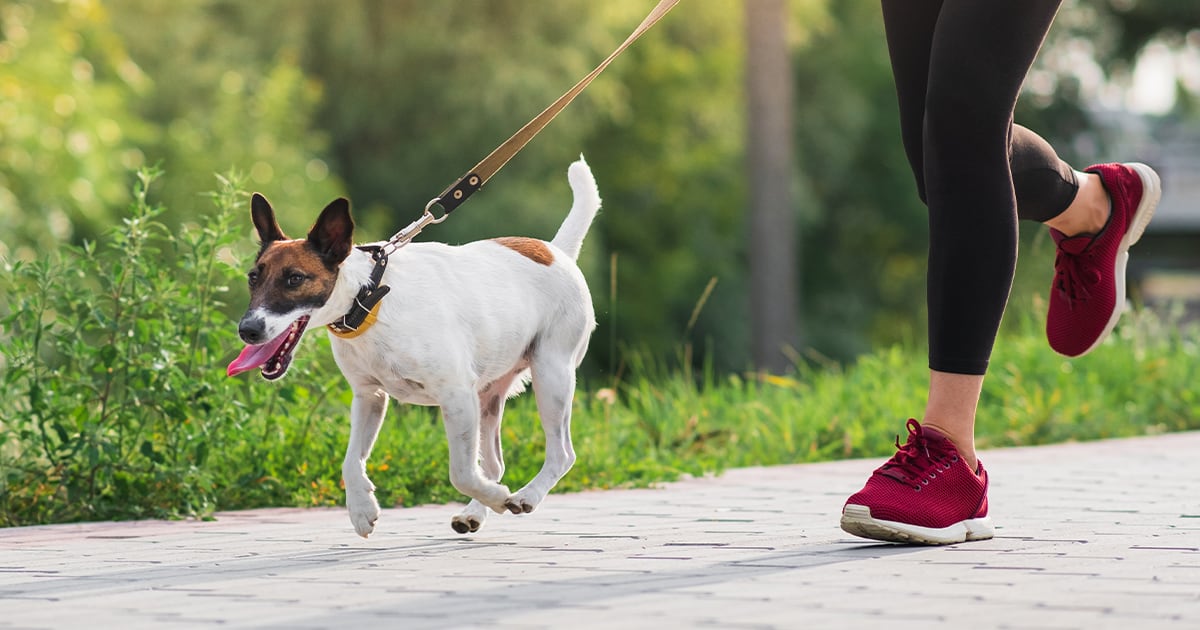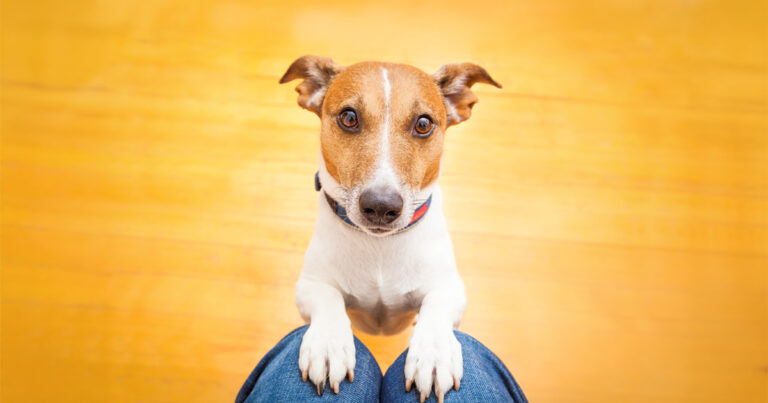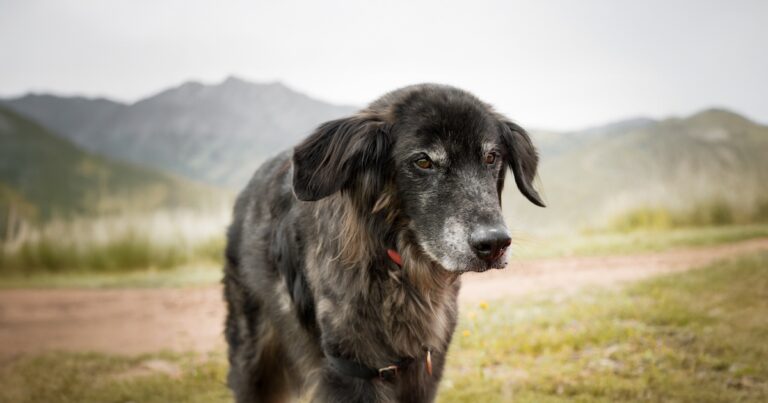If you’re an avid long-distance runner and a dog owner, you’ve probably wondered if your favorite canine could be your favorite running partner, too. The good news for lots of dogs and their owners is that with a little training, this is certainly a possibility, as long as you check a few things first. To help get your new running buddy up to speed, we’ve developed a four-step guide to doggy endurance running.

The most important thing to do before your dog starts endurance running is make sure they are healthy enough to do so. Tell your veterinarian that you plan on taking them long-distance running so they can make sure your dog is physically capable of running for extended periods of time.
Some breeds are not suited to running long distances, especially brachycephalic breeds (dogs with short muzzles like bulldogs, Boston terriers, pugs, mastiffs and shih tzus). Even if your dog is a breed that is known for running all day, it’s still important to have them checked by a veterinarian, as they may have an underlying health condition.

There’s nothing worse than running along, being in the zone and suddenly ending up in a tangled mess of leash, dog and human. That’s why it’s important for your dog to be fully trained in leash-walking etiquette before starting your running adventure. They should be able to walk comfortably beside you without pulling at the leash or getting distracted by every smell, sight and animal they encounter along the way. A hands-free leash can be a good option so that your hands can follow a natural movement while you’re running.

On the first day you started endurance running, you probably couldn’t run the distance you can now — and neither can your dog. You will need to set up a training program for your dog that gradually gets them used to long-distance running and builds their endurance. Start off by running short distances during your usual walk. Then gradually lengthen the running time vs. walking time until you are running the whole time. You can then gradually build upon the distance you run each time.
Your dog needs to warm up and cool down too, so start and end your run with a few minutes of walking. To help them know when it’s time to kick up the speed, use a command to tell them it’s go time. The same applies to slowing down — let them know you’re going to slow down or stop with a “go slow” command.

Running is thirsty work, so carry water for your dog with you and stop for water breaks. It’s best to stop for water multiple times rather than have your dog drink one big bowl at the end of the run. It’s also important to check that your dog is coping OK with their new hobby. If they are panting excessively or trailing behind you, it’s time to stop and rest. And don’t forget the weather — avoid running in conditions, hot or cold, that will be uncomfortable for your dog.
Running Isn’t for Every Dog (or Pup)
Like people, some dogs just aren’t runners. Just because your dog is a breed that typically loves to run until the cows come home (sometimes literally), it doesn’t mean that your dog will want to. You could have two border collies and one will run all day and the other prefers short bursts of energy. If your dog isn’t interested in running with you or gets tired easily, it may be time to find a new activity to do together.
It’s also important the dogs are fully grown before they start running with you. While a pup’s bones are still growing, they can be damaged by the impact that running has on them. Different breeds finish growing at different ages, so make sure you check with your veterinarian that your dog is old enough to start running.
Long-distance running can be a great way for you and your dog to spend quality time together. Just make sure your new running partner is up for the challenge before you start trotting off together.
RELATED POST: The Best Dog Breeds for Distance Runners







